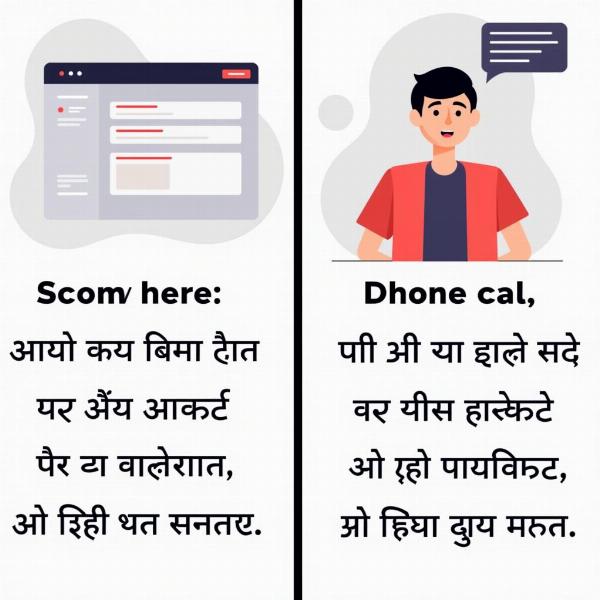“I had applied” signifies a completed action in the past, occurring before another past event. Understanding its Hindi equivalent is crucial for effective communication. This article explores various ways to express “I had applied” in Hindi, considering nuances of tense, context, and formality. We’ll delve into the grammatical structures and provide practical examples to help you accurately convey this past perfect tense in Hindi.
Expressing “I Had Applied” in Different Contexts
The Hindi translation of “I had applied” depends heavily on the specific context. While the most common translation uses the past perfect tense, alternative phrasing may be more appropriate depending on the situation.
-
Formal Context: In a formal setting, such as a job interview or official document, using the past perfect tense is generally preferred. The most common way to express this is “मैंने आवेदन कर दिया था” (maine aavedan kar diya tha). This construction emphasizes the completion of the application before another past event.
-
Informal Context: In casual conversations, a simpler past tense might suffice. For instance, “मैंने आवेदन किया था” (maine aavedan kiya tha) can effectively communicate the same meaning. While technically simple past, it often carries the implied meaning of completion before another past action in informal speech.
-
Emphasis on Completion: To emphasize the completion of the application, you can use phrases like “मैंने पहले ही आवेदन कर दिया था” (maine pahle hi aavedan kar diya tha), which translates to “I had already applied.” This adds an extra layer of emphasis to the fact that the application was completed prior to the other event being discussed.
Grammatical Breakdown of “Maine Aavedan Kar Diya Tha”
Let’s analyze the common translation “मैंने आवेदन कर दिया था” (maine aavedan kar diya tha):
- मैंने (maine): This is the past perfect form of “मैं” (main – I) and indicates the subject performing the action.
- आवेदन (aavedan): This is the Hindi word for “application.”
- कर दिया (kar diya): This verb phrase signifies the completion of the action. “करना” (karna) means “to do” and “दिया” (diya) is an auxiliary verb indicating completion.
- था (tha): This auxiliary verb marks the past perfect tense, showing the action occurred before another past event.
Common Mistakes to Avoid
When translating “I had applied,” be mindful of these common errors:
- Incorrect Tense: Using the simple past tense without the appropriate context can lead to ambiguity. Make sure the tense accurately reflects the sequence of events.
- Gender Agreement: While “aavedan” (application) is masculine, ensure other parts of the sentence agree with the appropriate gender if discussing related nouns.
- Formal vs. Informal Usage: Choosing the wrong level of formality can sound unnatural. Use the past perfect for formal settings and consider the simpler past for casual conversations.
Using “I Had Applied” in a Sentence
Here are some examples of how to use “I had applied” in different Hindi sentences:
- Example 1: “I had applied for the job before the deadline.” – “मैंने समय सीमा से पहले नौकरी के लिए आवेदन कर दिया था” (maine samay seema se pahle naukri ke liye aavedan kar diya tha)
- Example 2: “I had already applied when they called me for the interview.” – “जब उन्होंने मुझे साक्षात्कार के लिए बुलाया, तब मैंने पहले ही आवेदन कर दिया था” (jab unhone mujhe sakshatkar ke liye bulaya, tab maine pahle hi aavedan kar diya tha)
 Examples of using "I Had Applied" in Hindi sentences
Examples of using "I Had Applied" in Hindi sentences
Conclusion
Mastering the nuances of the past perfect tense, particularly how to express “I had applied” in Hindi, is essential for clear and effective communication. By understanding the grammatical structures and contextual variations, you can confidently convey your message in both formal and informal settings. Remember to choose the appropriate phrasing based on your audience and the specific situation.
FAQ
- What is the most formal way to say “I had applied” in Hindi? The most formal way is “मैंने आवेदन कर दिया था” (maine aavedan kar diya tha).
- Can I use a simpler past tense for “I had applied” in Hindi? Yes, in informal contexts, “मैंने आवेदन किया था” (maine aavedan kiya tha) is often acceptable.
- How do I emphasize the completion of the application in Hindi? Use phrases like “मैंने पहले ही आवेदन कर दिया था” (maine pahle hi aavedan kar diya tha) – “I had already applied.”
- What is the Hindi word for “application”? The Hindi word for “application” is “आवेदन” (aavedan).
- Why is understanding context important when translating “I had applied”? Context determines the most appropriate tense and level of formality.
Meaning-Hindi.in is your trusted partner for professional Hindi translation services. We specialize in Business & Commercial, Legal, Technical, Website Localization, Educational, and Urgent translations. Our expert linguists ensure accurate and culturally sensitive translations for diverse needs. Need help with your next Hindi translation project? Contact us at [email protected] or call us at +91 11-4502-7584. Meaning-Hindi.in is your one-stop solution for all your Hindi language needs.